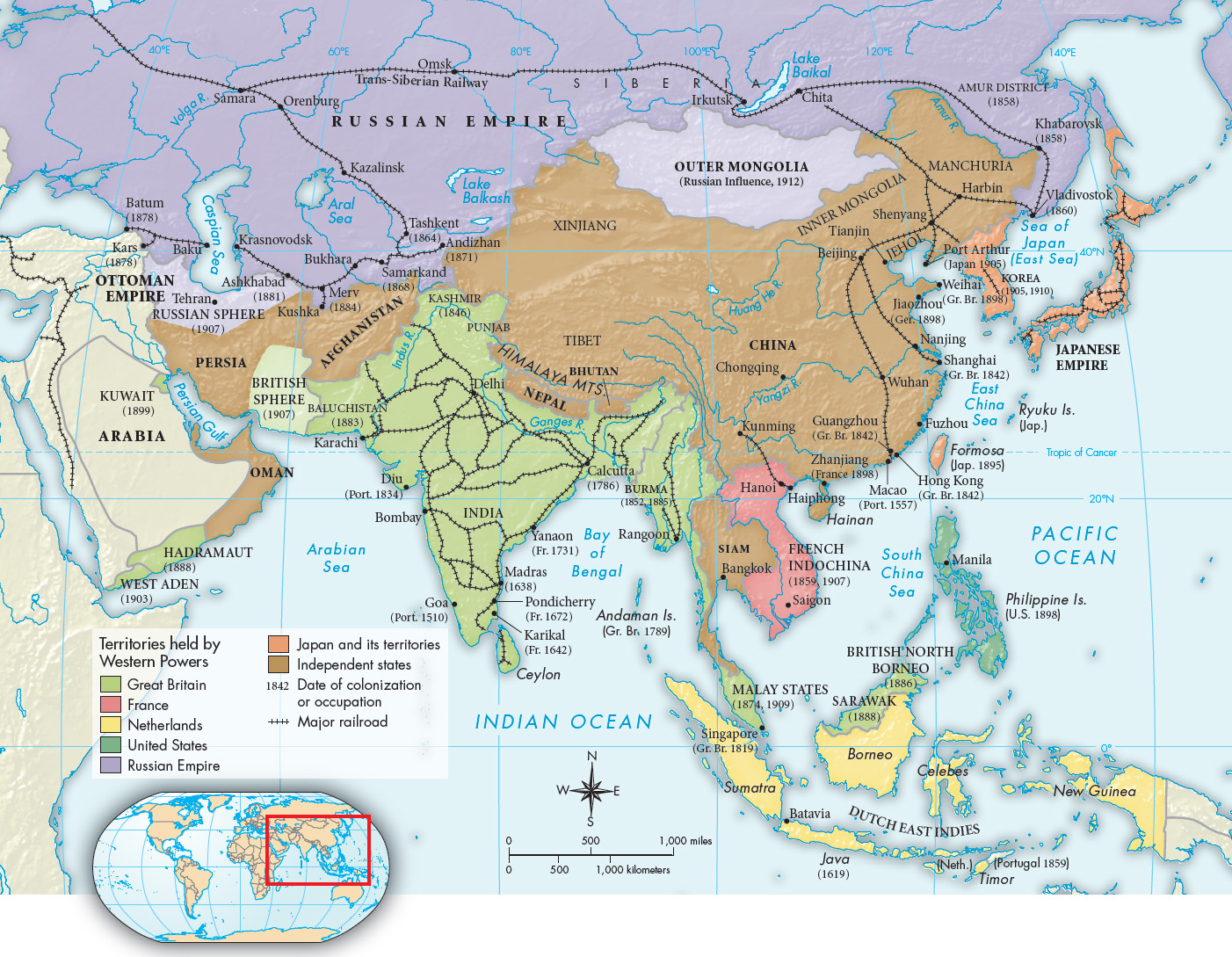Imperialism in Asia
Although their sudden division of Africa was more spectacular, Europeans also exerted political control over much of Asia. Here the Dutch were a major player. In 1815 the Dutch ruled little more than the island of Java in the East Indies. Thereafter they gradually brought almost all of the three-thousand-mile Malay Archipelago under their political authority, though — in good imperialist fashion — they had to share some of the spoils with Britain and Germany. In the critical decade of the 1880s, the French under the leadership of Ferry took Indochina. India, Japan, and China also experienced a profound imperialist impact (Map 24.3).

Two other great imperialist powers, Russia and the United States, also acquired territories in Asia. Russia moved steadily forward on two fronts throughout the nineteenth century. Russians conquered Muslim areas to the south in the Caucasus and in Central Asia, reaching the border of Afghanistan in 1885. Russia also proceeded to nibble greedily on China’s outlying provinces, especially in the 1890s.
The great conquest by the United States was the Philippines, taken from Spain in 1898 through the Spanish-American War. When it quickly became clear that the United States had no intention of granting the independence it had promised, Philippine patriots rose in revolt and were suppressed only after long, bitter fighting. Some Americans protested the taking of the Philippines, but to no avail. Thus another great Western power joined the imperialist ranks in Asia.